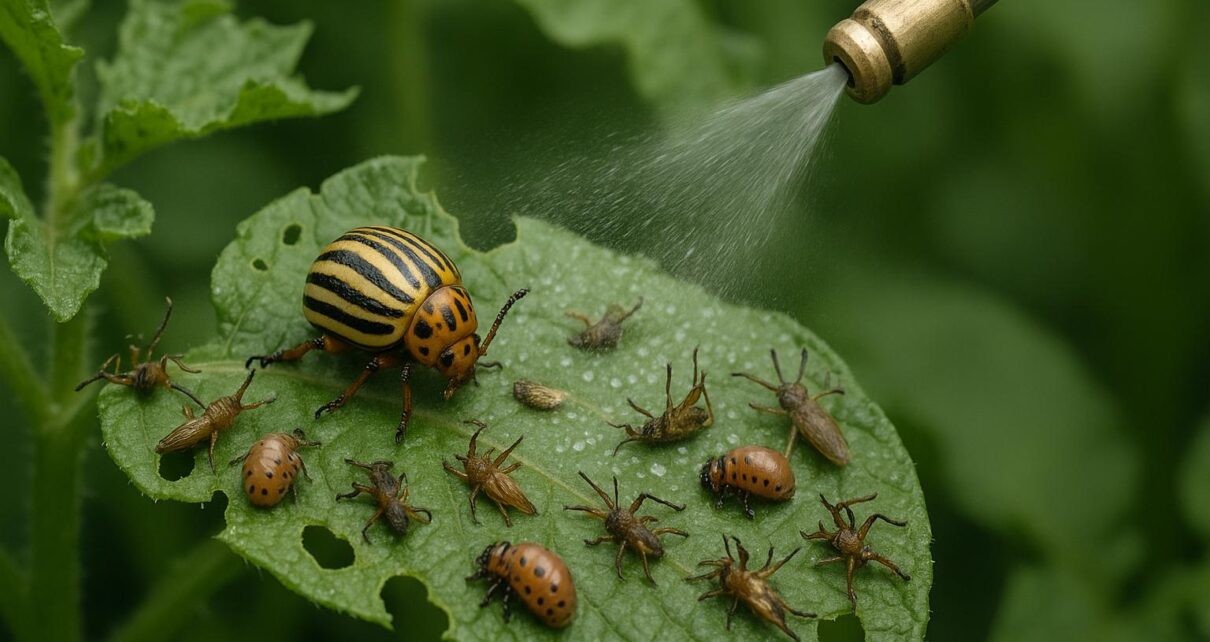If you’re serious about pest management, you’ve probably faced the same dilemma I did: go systemic or go contact? For years, I toggled between the two, watching each method shine in its own right, but also falter under certain conditions. Then it hit me—why not try both? What unfolded over the next few months completely rewired how I approach pest control in my fields.
This isn’t just another product testimonial or surface-level experiment. It’s a detailed dive into a hybrid strategy that could shift the way growers handle pest pressure. Whether you’re dealing with whiteflies, aphids, or stubborn borers, this story has takeaways you’ll want to use next season.
The Divide: Systemic vs. Contact
Before blending approaches, I needed to get honest about the strengths and weaknesses of each method.
Systemic pest control works from the inside out. It gets absorbed into the plant’s vascular system and poisons pests when they feed. It’s subtle, long-lasting, and lethal to hidden threats like root-eating grubs.
Contact control, on the other hand, is immediate and visible. Spray it on, and you’ll watch pests drop. It’s satisfying—but fleeting. Any pests that come later? They’re unbothered unless you spray again.
Why Most People Stick to One Side
- Systemic products are typically used for crops with deep-rooted or persistent pest problems. They’re cost-efficient over time but slow to act.
- Contact products offer instant gratification and are preferred during outbreaks when waiting isn’t an option.
Most farmers pick a side and stick with it. I used to, too. But over time, I realized pests don’t play by rules—and neither should my strategy.
The Hybrid Strategy Begins
It began with an odd weather season. Heat waves arrived early. Pest activity increased dramatically. Contact pesticides weren’t working, and my preferred systemic remedy required more time to start working. I decided to overlay both at that point.
I began modestly, experimenting with a few acres of green chilies and tomatoes to test the combination approach. I combined a low-dose systemic application with a known contact killer. Consistency was more important to me than control. I wanted the pests gone immediately so they wouldn’t bother me later.
After two weeks, there was no denying the difference. Compared to regions treated with only one strategy, plants treated with both approaches showed healthier yields, stronger recovery rates, and less obvious damage. Not only was this effective, but it was also changing the pest impact timetable.
Fine-Tuning the Mix
I didn’t merely assemble the items. It was all about timing. Applications of contact were required to be made during the height of pest exposure—systemic products require time to absorb and root access.
During this process, I discovered Thorlet Systemic Insecticide, a product that surprisingly helped my systemic layer. Its capacity to not only move throughout the plant but also to persist long enough to impact several insect generations was remarkable. I used it in conjunction with targeted contact treatments, and the combination remained effective even three weeks later when pest pressure surged once more.
Everything altered as a result of this balance between quick movement and durable protection. It resulted in cheaper labour expenses, fewer reapplications, and—above all—healthier crops overall.
Real-World Results from the Field
On paper, it sounds promising. But here’s what the field told me:
- Tomato plots using the hybrid approach saw a 19% decrease in pest-induced yield loss compared to those using only contact control.
- Pest resurgence in chili plots dropped by over 42% after one month without reapplication.
- Time spent on manual inspection and re-spraying was reduced by almost 50 hours over the season.
When I shared these stats with neighboring growers, the questions came flooding in. Everyone wanted to know the exact mix, the intervals, and the risks. One thing became clear: this was replicable.
“Insects may adapt to chemicals, but they struggle against strategy.”
That single realisation encapsulates why this hybrid approach is practical. When you hit pests from multiple angles, unpredictably and consistently, you outmanoeuvre their resistance cycles.
Adjusting for Crop Types
All crops universally embrace the hybrid approach. For example, lighter contact formulations were required for leafy greens to prevent residue. Although they required careful timing to avoid flowering interruptions, grapes responded well to soil-drenched systemic insecticides.
This isn’t a one-size-fits-all approach, as I quickly discovered. However, the following concepts are still in place:
- Understand your crop’s absorption rates and vulnerability periods.
- Match your contact product to the pest’s life stage.
- Space applications to overlap pest lifecycles without overloading the plant.
A helpful breakdown from the University of California’s Integrated Pest Management guide offers more profound insight into synchronizing treatments across crop types.
What About Safety and Resistance?
Overuse and resistance were among the first criticisms I heard. It’s legitimate. The resistance of any pest population can be accelerated by misuse. However, I observed a decrease in resistance rather than acceleration when I placed the contact and systemic layers and spaced treatments suitably.
Additionally, I was able to stop using contact sprays to cover my crops every week because the systemic component provided longer-lasting protection. As a result, the soil biome was happy, and there was less exposure and runoff.
This hybrid paradigm enables the rotation not only of products but also of modes of action, which is the focus of another helpful article I came across on pesticide resistance management.
What Caught Me Off Guard
Surprises were present—some good, some challenging.
The side suppression of secondary pests, such as thrips and mites, that I hadn’t specifically targeted was one unanticipated advantage. Fewer pests were able to recover between treatments as a result of the contact product’s knockdown impact and the systemic handling residuals.
However, timing was hindered by erratic weather. Rain right after submitting a contact form? It is no longer there. During systemic absorption, too much heat? It speeds up degradation. I must plan carefully around these factors.
FAQs
- Can I mix systemic and contact insecticides in one tank?
Sometimes yes, but always check compatibility charts and perform a small jar test first. Some combinations neutralize each other or damage crops. - Will this work in organic farming?
Organic options for systemics are limited. Neem-based solutions offer partial systemic action, but results vary. The hybrid model is more viable in integrated pest management (IPM) than strict organic systems. - How often do you reapply?
Contact: As needed, often every 7–10 days during outbreaks. Systemic: Once every 3–4 weeks, depending on the product and crop lifecycle. - What crops benefit the most?
High-value crops with long growing seasons—tomatoes, chilies, grapes, and some brassicas—see the best returns from dual treatment. - Is it safe for pollinators?
That depends entirely on what you use. Avoid systemic applications during flowering, and opt for pollinator-safe contact options when bees are active.
Not a Conclusion, But a Challenge
There’s no silver bullet in pest control. But there are smarter ways to fight. Combining systemic and contact methods gave me not just better pest results, but better margins, better soil health, and less stress mid-season.
My actions weren’t groundbreaking. It was calculated. You could succeed as well. However, the secret is to adjust the technique to your crops, pests, and timing. Instead of using this blog as a prescription, use it as a guide to reconsider how you approach the fight.
Break free from binary thinking this season. Try, measure, and adjust. If you are prepared to watch and optimise, you may discover that hybrid is not only superior, but also necessary.
Also, make sure to record everything if you attempt it. Because your most effective insecticide the next time will be your own field data.



